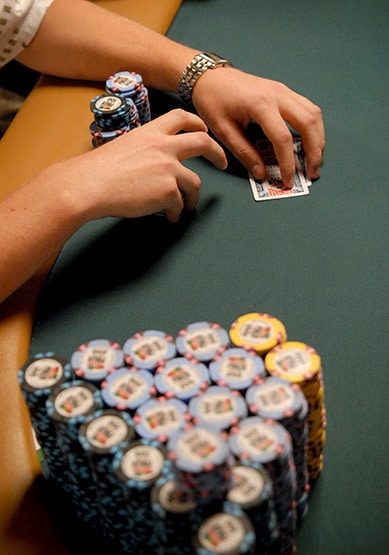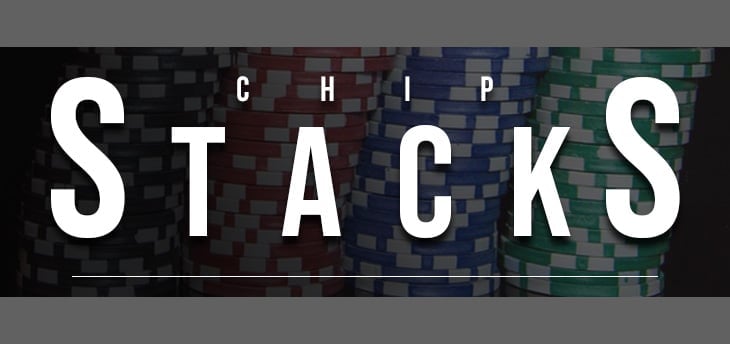Do you ever sit back, relax, and ask yourself, “How in the blazes do some folks know exactly where their greenbacks are when they’re ankle-deep in colorful casino chaos?” Don’t worry. You’re not alone. Yes, I’m talking about the basics of chip organization. That’s right, the secret sauce that separates the jesters from the card-carrying royalty in the grand casino court.
Chip organization can often be overlooked, but it is as vital as a sturdy pair of cowboy boots at a rodeo. It provides you with a clear view of your assets, strategic advantages, and an aura of professionalism that can intimidate opponents. So let’s go on an adventure, shall we? Where we’re headed, you won’t need a roadmap, just your wits, and a dash of panache.
Categorization
Categorization, the first secret of chip organization, is as essential as knowing the difference between a bad bluff and a well-timed fold. How you ask? Well, categorization allows you to keep track of your assets and make quick decisions under pressure. Plus, it provides the aesthetic appeal that often makes your opponents think twice before calling your bets.
The common method? Arrange chips by their denomination. Start with the highest at the back and the lowest in the front. Simple, isn’t it? But why not go a step further and organize the chips by color too? Red, blue, white, green, the entire rainbow at your disposal! Create a spectrum that not only aids your play but also dazzles the table with your unique flair.

The Towers of Triumph
We’ve all seen it: the towering stacks of chips, standing like proud monuments of past victories and promising the potential of future conquests. But how high should these towers be? Ten? Twenty? The height of the Eiffel Tower? Well, the answer is surprisingly practical.
The unwritten rule suggests that a stack should consist of 20 chips. Easy to halve into stacks of ten for easy counting, easy to manage, and less likely to topple and cause an avalanche of chaos. Picture this, your heart pounds as you push forward your hefty bet, but oh dear, the chips tumble, turning your intimidating moment into a comedy skit. Manageable stacks of 20 curtail such messes, letting you focus on what truly matters: the art of the game.
Your Own Personal Code
Static categorization and towers are useful, but what about when the game gets heated? You’ve got chips coming in, chips going out, and you’re trying to maintain that picture-perfect organization without missing a beat of the action.
One clever trick? Keep a ‘working stack.’ Think of it as your transaction zone, where you make and receive bets. As new chips flow in, sort them into the right categories and towers during quieter moments. Keep the game flowing and your chip city thriving.
Your Silent Communicator
You’re a charming character, no doubt, but why not let your chips do some of the talking too? A well-organized chip set can speak volumes about your game strategy. Are you aggressive, conservative, a wild card? The chips reveal all!
A tidy, well-maintained chip set signals a methodical player. A loosely sorted stack might suggest a casual, perhaps unpredictable competitor. And a chaotic pile? Well, that’s anyone’s guess! Your chip organization communicates your attitude at the table, shaping your opponents’ perception and potentially influencing their decisions.
Unspoken Etiquette
Did you know there’s an etiquette to chip handling? Like a secret handshake among the poker elite, following these unwritten rules subtly signifies that you’re a player who knows the ropes. First, avoid ‘splashing the pot’ – tossing chips into the middle haphazardly. It’s messy, confusing, and, quite frankly, a tad uncouth. Not to mention it can confuse the betting and many places do not allow it. Instead, place your bets neatly in front of you. It’s courteous and lets everyone easily see the bet size.
Second, resist the urge to fiddle. Yes, chips have a certain tactile charm, but constant shuffling, clicking, or flipping can be distracting. Show some restraint and channel that energy into the game itself!
Mind Over Chips
Beyond the practical, there’s an almost philosophical benefit to organizing your chips. It promotes discipline, mindfulness, and attention to detail, attributes that echo into your poker strategy. When you meticulously sort and stack, you’re practicing patience, precision, and strategy, training yourself to apply these very traits when playing the game.
Ever thought that such a simple action could have such a profound impact? Well, my friend, poker is a game of subtle depths, and mastering chip organization is just one of its many nuances.

Be the Chipmaster
The art of chip organization is more than just aesthetics or convenience. It’s a reflection of you as a player and your approach to the game. It’s your visual strategy, a silent communicator, and a testament to your professionalism.
Organizing your chips is a dance between categorization, stack heights, dynamics, readability, etiquette, and the mental benefits. Balance these elements, and you become not only a player but a chip master, an architect of your own fortune, a spectacle to behold on the casino floor.
So, the next time you’re at the table, remember: you’re not just playing cards. You’re curating a journey, a narrative told in colorful, stacked circles, turning a game of chance into an art form. Now, isn’t that worth stacking up to?
Remember, you are not just playing poker. You’re shaping experiences, painting pictures, and weaving tales, one chip stack at a time. Because in poker, as in life, the devil – or perhaps, the joker – is in the details. So stack it up, my friend. The table is yours to command.

